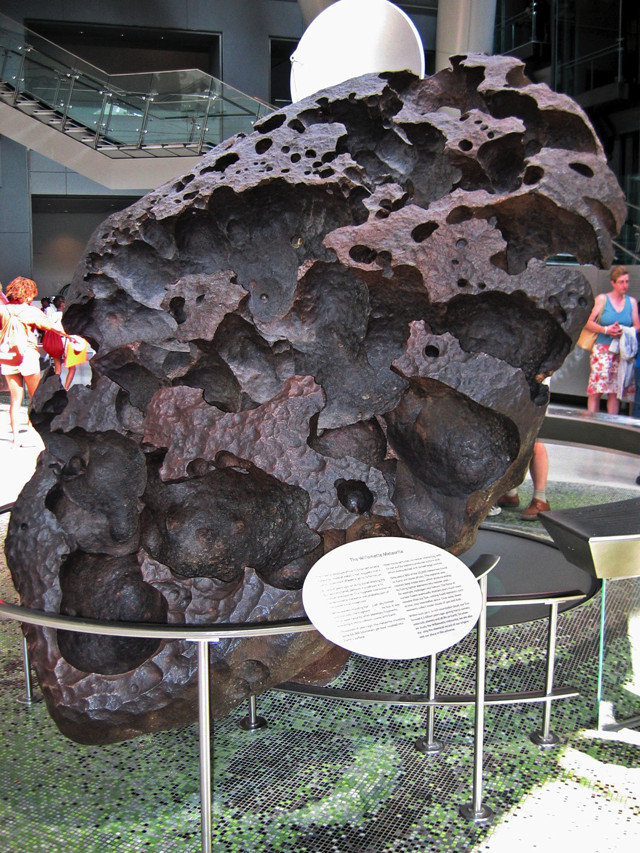
by Sarah Derouin Tuesday, September 19, 2017

The Willamette Meteorite on display at the American Museum of Natural History in New York City. Credit: Dante Alighieri, CC BY-SA 3.0.
Researchers have discovered a new way to determine when a meteorite hit Earth, a technique that could not only help scientists date ancient meteorite strikes but also determine when planetary crusts first formed.
Desmond Moser, a geologist at the University of Western Ontario and co-author of the new study in Nature Communications, and his team analyzed crystals of baddeleyite deformed by shockwaves during the impact at Sudbury in Canada about 2 billion years ago. Baddeleyite, a rare zirconium oxide mineral found in terrestrial rocks and meteorites, contains trace amounts of radioactive uranium and lead, useful in calculating the age of collision.
“These [crystals] can be used as tiny clocks that are the basis for our geologic timescale,” Moser said in a statement. “But because these crystals are a banged-up mess, conventional methods won’t help in extracting age data from them.”
Using an atom probe, the scientists sliced and lifted out tiny pieces of the mineral that represent when the stopwatch was started after impact, thus allowing them to date the impact to 1.852 billion years ago, plus or minus 45 million years. “The really cool part of the paper is the fact that we generated the correct age from a piece of rock effectively 1/1,000 the width of a human hair, pulling it apart atom by atom in the process,” says Lee White of the Royal Ontario Museum in Canada and lead author of the study.
© 2008-2021. All rights reserved. Any copying, redistribution or retransmission of any of the contents of this service without the expressed written permission of the American Geosciences Institute is expressly prohibited. Click here for all copyright requests.